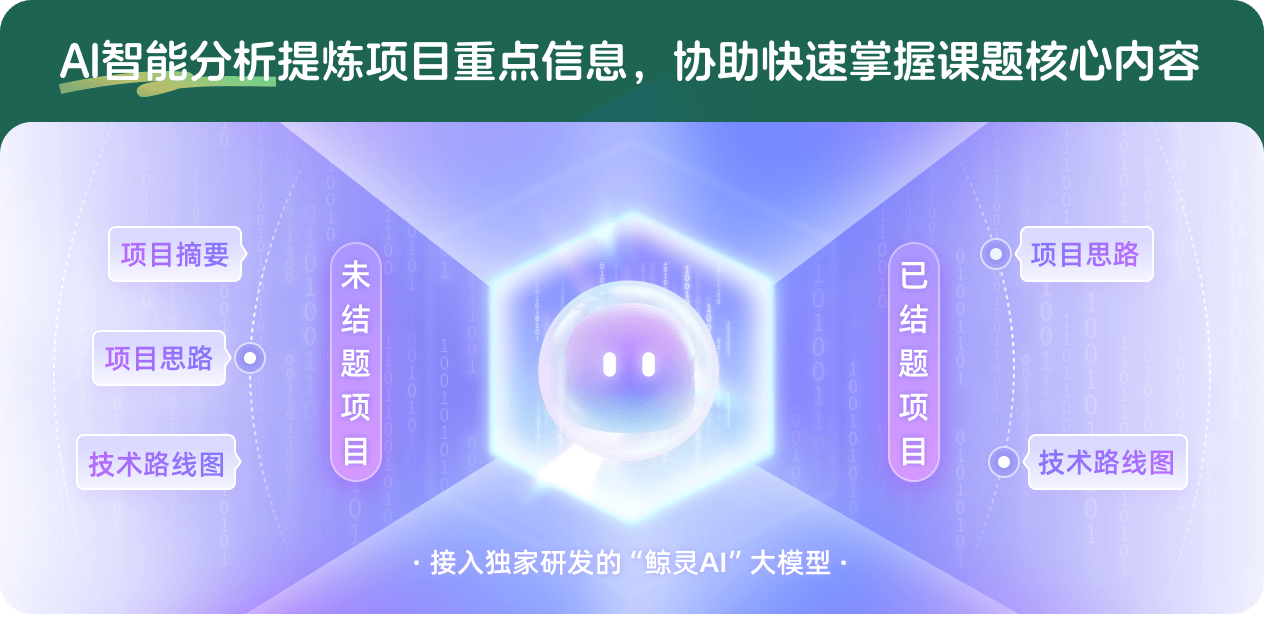云南宣威晚二叠世C1煤燃烧排放颗粒物中纳米石英、重金属元素、PAHs的细胞毒性差异及协同生物效应研究
项目介绍
AI项目解读
基本信息
- 批准号:41273127
- 项目类别:面上项目
- 资助金额:80.0万
- 负责人:
- 依托单位:
- 学科分类:D0707.环境地球化学
- 结题年份:2016
- 批准年份:2012
- 项目状态:已结题
- 起止时间:2013-01-01 至2016-12-31
- 项目参与者:尚羽; 马静; 刘宁; 王亮; 张睿; 任晶晶; 郝晓洁; 易飞;
- 关键词:
项目摘要
The link between high lung incidence and harmful pollutants emitted from combustion of Late Permian Coal (C1) in Xuanwe, Yuanan Province has been a focus of study since 1980s. Earlier studies (Mumford et al., 1987) demonstrated that high lung cancer mortality rate was related to PAHs from combustion of C1. While a recent study (Tian,2005) has shown that nanoquartz in the coal combustion pollutants contributed to the higher lung cancer incidence, the fact that lung cancer mortalities in Xuanwei displayed stronger correlation with PSVI (the potential for silica-volatile interaction in the C1 coal) values than with volatiles or silica alone has been reported in newer research work (Large et al., 2009). Considering three toxicants (PAHs,quartz and heavy metals) are actually harmful to human, the toxicity of coal combustion-generated particles should mainly caused by them accordingly. However, so far the toxicological difference of nanoquartz, heavy metals and PAHs in Xuwei C1 coal combustion pollutants has not been well studied yet, and whether synergistic effects exist among the three toxicants remains unclear. Our study tries to solve these problems.In this study, during the laboratory experiment, we will begin with combusting collected coal in the same manner the local residents usually employed, and sample the emitted ambient particles of different airborne diameters (from micrometer to nanometer). The collected particle samples will be then analyzed using cutting-edge methods, including Aerosol Time of Flight Mass Spectrometer (ATFMOS),High-Resolution Transmission Electronic Microscopy (HRTEM),for unveiling of physic-chemical characterization of nanoquartz, heavy metals and PAHs. Based on these experimental data, the mechanisms for the migration and transformation of the three toxicants will be investigated. Due to the fact that the pollutant particles are composed of organic and inorganic components, during the study we have successfully separated these two substances, and conducted experiments on both of them respectively. The process of separation can be described as follows:(1) quartz solution will be prepared with heavy metals chelator;(2) solution with heavy metals will be used for depletion of activity of quartz surface; (3) PAHs could be obtained though dissolution in DMSO. In addition, ternary mixture (Quartz-Fe-BaP)will be prepared by with reference materials. Epithelial cells A549 will be exposed to the different solutions contained DMSO. The results of reactive oxygen species,DNA damage, and protein variation related to reactive stress resulted from the 4 different toxicants will be compared. With this information, synergetic effects among nanoquartz, heavy metals and PAHs could be well explored.Our research work would provide evidence both for elaboration of Xuanwei lung cancer genesis, as well as for decision making of health risk evaluation and pollutants control policy which relate to large-scale coal production and combustion.
云南宣威肺癌的高发率与晚二叠世C1煤燃烧排放污染物之间的关系一直是相关研究领域的热点,但C1煤燃烧排放颗粒物中的有害组分之间的毒性差异及其协同生物效还不清楚。本研究模拟当地居民的燃煤方式,采集C1煤燃烧排放的不同粒径颗粒物,利用气溶胶飞行时间质谱仪、高分辨透射电镜等手段对颗粒物中的纳米石英、重金属元素和PAHs进行表征,以此来研究C1煤中有害组分的迁移转化规律;通过抑制石英的表面活性、螯合重金属元素、溶解PAHs等方法获取用于细胞暴露的组分,以肺上皮细胞A549为模式,比较上述有害组分诱导细胞产生的氧化应激及其关联蛋白表达的差异,在细胞和分子水平比较它们的毒性差异并参照三元混合物(石英-Fe-苯并(a)芘)的毒性,探讨纳米石英、重金属元素和PAHs间存在的协同生物效应。研究成果能为宣威肺癌的发生提供新的科学数据,也能为煤炭资源大规模开发利用导致的环境污染健康风险的评价与预防提供科学依据。
结项摘要
在基金委资助下,课题组对我国肺癌高发区宣威地区大气颗粒物及宣威煤燃烧排放颗粒物的表征及毒性进行了系统研究,主要结论为:(1)宣威大气颗粒物的质量浓度有明显的季节变化规律,冬季高于春季,颗粒物的质量浓度主要集中在细/超细颗粒物的粒径范围;(2)宣威大气颗粒物的微观组成主要由烟尘集合体、飞灰、矿物颗粒和无法识别的颗粒物组成;(3)宣威地区 大气颗粒物中主要元素的质量浓度为Al>Zn>Fe>Ca>K>Mg,其中重金属元素Zn的质量浓度138-1179 ng•m-3,而Fe的质量浓度在 418.56-479.80 ng•m-3;重金属元素主要分布在细/超细颗粒物中;(4)宣威大气颗粒物赋存持久性自由基,主要是来自金属类自由基和半醌类自由基及含硫自由基,细颗粒物产生自由基的能力较强,但超细颗粒的氧化潜能最高;(5)同一浓度下,细颗粒物的细胞毒性最强;(6)宣威煤燃烧排放颗粒物主要有烟尘集合体、飞灰、形态规则的矿物颗粒和形态不规则的矿物颗粒,颗粒物的粒径主要集中在200nm-2um; (7) 宣威燃煤排放颗粒物的化学组分主要有Na, Al,K, Ca,Fe,Co, Ni, Cu,Zn, Cd, Pb等,其中重金属元素主要分布在细颗粒物中;(8) EPA列出的16种有毒有害PAHs在宣威燃煤排放颗粒物中均有检出,不同粒径颗粒物中PAHs的质量浓度变化较大在162-5912 ug/g,主要分布在细颗粒物中;在PAHs中,4环和5环所占的比例较高(9)燃煤排放颗粒物的水溶组分具有较高的氧化潜能,对细胞的毒性亦较高;有机组分的氧化潜能与PAHs之间有较好的相关性;与DTT消耗率相关性最强的PAH是屈(R2=0.65),其次是致癌性较强的苯并(a)芘(R2=0.63)、荧蒽(R2=0.62)、茚苯(1,2,3-cd)芘(R2=0.59)和苯并(g,h,i)芘(R2=0.51)(10)在相同浓度下,宣威燃煤排放颗粒物有机组分的细胞毒性高于无机水溶组分的细胞毒性;研究的结果为揭示宣威人群肺癌的高发与燃煤排放污染之间的关联提供了科学数据。
项目成果
期刊论文数量(12)
专著数量(0)
科研奖励数量(0)
会议论文数量(6)
专利数量(0)
Copmarison of cellular toxicity caused by ambient ultrafine particles and engineered metal oxide nanoparticles
环境超细颗粒和工程金属氧化物纳米颗粒引起的细胞毒性的比较
- DOI:--
- 发表时间:2015
- 期刊:Particle and Fibre Toxicology
- 影响因子:10
- 作者:Shang Yu;Wu Minghong;Donaldson Ken;Wang Qinyue
- 通讯作者:Wang Qinyue
Physicochemical properties and ability to generate free radicals of ambient coarse, fine, and ultrafine particles in the atmosphere of Xuanwei, China, an area of high lung cancer incidence
肺癌高发区宣威大气中粗、细、超细颗粒物的理化特性及产生自由基的能力
- DOI:10.1016/j.atmosenv.2013.11.047
- 发表时间:2014-11-01
- 期刊:ATMOSPHERIC ENVIRONMENT
- 影响因子:5
- 作者:Lu,Senlin;Yi,Fei;Wang,Qingyue
- 通讯作者:Wang,Qingyue
宣威街道尘中重金属的分布特征及其健康风险评估
- DOI:--
- 发表时间:2015
- 期刊:环境科学
- 影响因子:--
- 作者:刘品威;米持真一;王效举;王青躍
- 通讯作者:王青躍
云南宣威地区燃煤排放颗粒物中石英矿物的特征
- DOI:--
- 发表时间:2013
- 期刊:环境科学研究
- 影响因子:--
- 作者:任晶晶;张荣驰;刘丁彧;吕森林
- 通讯作者:吕森林
Characterization of protein expression of Platanus pollen following exposure to gaseous pollutants and vehicle exhaust particles.
暴露于气态污染物和汽车尾气颗粒后悬铃木花粉的蛋白质表达特征
- DOI:10.1007/s10453-014-9327-5
- 发表时间:2014
- 期刊:AEROBIOLOGIA
- 影响因子:2
- 作者:Lu, Senlin;Ren, Jingjin;Hao, Xiaojie;Liu, Dingyu;Zhang, Rongci;Wu, Minghong;Yi, Fei;Lin, Jun;Shinich, Yonemochi;Wang, Qingyue
- 通讯作者:Wang, Qingyue
数据更新时间:{{ journalArticles.updateTime }}
{{
item.title }}
{{ item.translation_title }}
- DOI:{{ item.doi || "--"}}
- 发表时间:{{ item.publish_year || "--" }}
- 期刊:{{ item.journal_name }}
- 影响因子:{{ item.factor || "--"}}
- 作者:{{ item.authors }}
- 通讯作者:{{ item.author }}
数据更新时间:{{ journalArticles.updateTime }}
{{ item.title }}
- 作者:{{ item.authors }}
数据更新时间:{{ monograph.updateTime }}
{{ item.title }}
- 作者:{{ item.authors }}
数据更新时间:{{ sciAawards.updateTime }}
{{ item.title }}
- 作者:{{ item.authors }}
数据更新时间:{{ conferencePapers.updateTime }}
{{ item.title }}
- 作者:{{ item.authors }}
数据更新时间:{{ patent.updateTime }}
其他文献
环境大气可吸入颗粒物的矿物学研究.
- DOI:--
- 发表时间:--
- 期刊:辽宁工程技术大学学报, 2003, 22卷5期
- 影响因子:--
- 作者:吕森林;邵龙义;时宗波;李红;肖正辉
- 通讯作者:肖正辉
北京市冬季室内空气PM10微观形貌及粒度分布,
- DOI:--
- 发表时间:--
- 期刊:中国环境科学,2004,24卷4期,
- 影响因子:--
- 作者:赵厚银;邵龙义;吕森林
- 通讯作者:吕森林
上海城区和临安本底站PM2.5的物化特征及来源解析
- DOI:--
- 发表时间:--
- 期刊:中国环境科学
- 影响因子:--
- 作者:吴明红;王青躍;吕森林
- 通讯作者:吕森林
北京城区可吸入颗粒物(PM10)的矿物学研究,
- DOI:--
- 发表时间:--
- 期刊:中国环境科学,2005,25卷2期,
- 影响因子:--
- 作者:吕森林;邵龙义
- 通讯作者:邵龙义
北京市室内PM10对质粒DNA氧化性损伤研究,
- DOI:--
- 发表时间:--
- 期刊:自然科学进展,2005, 15卷4期,
- 影响因子:--
- 作者:邵龙义;赵厚银;Jones T. P.;吕森林;Morella L.
- 通讯作者:Morella L.
其他文献
{{
item.title }}
{{ item.translation_title }}
- DOI:{{ item.doi || "--" }}
- 发表时间:{{ item.publish_year || "--"}}
- 期刊:{{ item.journal_name }}
- 影响因子:{{ item.factor || "--" }}
- 作者:{{ item.authors }}
- 通讯作者:{{ item.author }}

内容获取失败,请点击重试

查看分析示例
此项目为已结题,我已根据课题信息分析并撰写以下内容,帮您拓宽课题思路:
AI项目摘要
AI项目思路
AI技术路线图

请为本次AI项目解读的内容对您的实用性打分
非常不实用
非常实用
1
2
3
4
5
6
7
8
9
10
您认为此功能如何分析更能满足您的需求,请填写您的反馈:
吕森林的其他基金
机车排放颗粒物(DEPs)胁迫下的致敏花粉的抗原性及其协同诱导的氧化应激研究
- 批准号:21477073
- 批准年份:2014
- 资助金额:85.0 万元
- 项目类别:面上项目
大气纳米颗粒和人造纳米颗粒产生的氧化性应激比较研究
- 批准号:10775094
- 批准年份:2007
- 资助金额:36.0 万元
- 项目类别:面上项目
城市纳米尺度大气颗粒物的化学表征和潜在毒性研究
- 批准号:40675080
- 批准年份:2006
- 资助金额:27.0 万元
- 项目类别:面上项目
相似国自然基金
{{ item.name }}
- 批准号:{{ item.ratify_no }}
- 批准年份:{{ item.approval_year }}
- 资助金额:{{ item.support_num }}
- 项目类别:{{ item.project_type }}
相似海外基金
{{
item.name }}
{{ item.translate_name }}
- 批准号:{{ item.ratify_no }}
- 财政年份:{{ item.approval_year }}
- 资助金额:{{ item.support_num }}
- 项目类别:{{ item.project_type }}




















